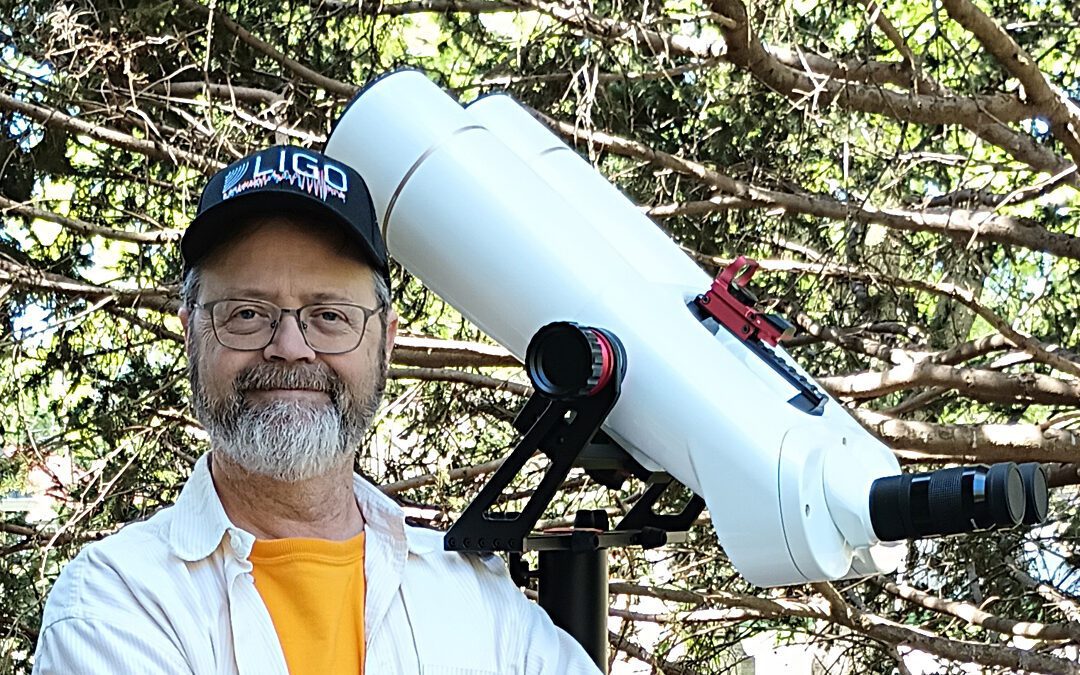I was surprised and delighted by a gift from an astronomy friend this week, a LIGO cap (Laser Interferometer Gravitational-Wave Observatory). It was accompanied with a wonderful story in an impeccably hand-written card. Here is what the card says:
Dear Fiske,
When I was a student there was a physics professor named Kip Thorne who loved to tell stories about black holes, time travel and wormholes. His team also worked on an instrument called LIGO (and concept LISA) to detect gravitational waves from distant events like colliding black holes. Rumor had it the prototype could pick up ocean waves on the beach 40 miles away. But that was by far not enough. Fast forward a decade and LIGO detected its first black hole merger more than one billion light years away. Prof. Thorne (also Weiss and Barish) received a Nobel prize for the new observing technology.
More discoveries followed. Mr. Thorne retired in 2009 and decided to help popularize science. He helped C. Nolan make the 2014 SciFi movie Insterstellar, coloring many of the scientific scenarios Kip used to tell.
My friend goes on to say, knowing that I often observe from my light-polluted urban yard, that “there is no light pollution in gravitational waves.” They are not, however, easily observed with binoculars! 😉Even the fine Oberwerk 120XL binocular telescope shown in the picture above.
I’m going to read up on LIGO discoveries to hopefully pinpoint a location in the northern sky which I can view with binoculars, knowing that something mysterious (if invisible) discovered by LIGO is there. 🙂


Wonderful! I read a nice book by Govert Schilling (who often writes for Sky & Telescope) called Ripples in Spacetime about LIGO’s discovery. The thing that stood out to me is they would do test “runs” where they fake a signal and go through the entire process of writing a paper about it (memory served this would take months) before finally revealing if was a test or not.
Related, are you using the Oberwerk fork mount on the 120s? I have 100BT on the “fluid” head and haven’t loved it. As a Dob guy I’m thinking I might like the fork mount more.
Awesome!
But LIGO is kinda like a binocular. I mean you need two sites to observe and really each one has two beams so….
Hey, Carter. Thanks for your comment. 😊 I have observed with the 120XL on both the Manfrotto NT612 video head and the Oberwerk 280XL fork. On the video head, positioning the view is a little finicky (not bad, honestly, just slightly irritating). Oddly, on the fork mount it is not quite as steady compared with the NT612 (again a minor thing, vibrations dampen fairly quickly). Comparing the two minor annoyances, I have a preference for the fork. A decided preference, honestly. Positioning the view is reliable and easy with no fussiness. I don’t frequently use the 120XL at higher magnification, though, which might tilt the advantage back to the NT612.
Good point, Jordan. Thank you for sharing! 😊
Ripples in Spacetime by Govert Schilling is available at my local library, so now I have a hold on it. Thanks for telling me about this book, Carter. 🙂